
Contact
Biological mapping
Børge Holte
+47 77 60 97 53
Geological mapping
Terje Thorsnes
+47 73 90 42 75
Bathymetry
Hanne
Hodnesdal
+47 51 85 88 23
Information officer
Beate Hoddevik Sunnset
+47 55 23 85 16

Published: 29.01.2007 Updated: 24.10.2019
Copulating octopuses, feeding hermit crabs, squat lobsters and tiny crustaceans, sponges of all shapes and colours: IMR scientists are ecstatic about the fantastic images their high-definition camera has brought up from the deep during a four week long survey in the Barents Sea. Never before have they been able to watch life unfold on the seabed of the Arctic in such great detail.
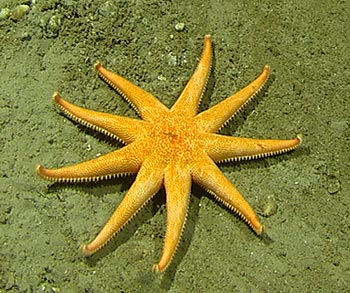
Sunstar (Solaster sp.) at 300 metres depth on
Tromsøflaket in the Barents Sea.
Whereas sampling with different kinds of equipment is normally used to collect information on bottom fauna, a specially designed video rig has allowed the scientists to film 80 kilometres of seabed during their survey off the coast of northern Norway. The seabed in the area is characterised by deep fjords and shelf areas with fishing banks and intersecting channels. Many of the habitats found here are complex and not easily documented with standard sampling gears.
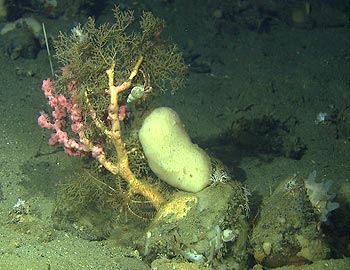
A small bubble gum coral (Paragorgia arborea) with
various epifauna attached, at 200 metres depth in a fjord.
The recent survey was conducted as part of a large-scale mapping programme. Biologists from the Institute of Marine Research, geologists from the Geological Survey of Norway, and cartographers from the Norwegian Hydrographic Service cooperate through the MAREANO programme to provide maps of topography, biodiversity and geological conditions of the seabed in Norwegian waters. Initially focusing on the Barents Sea, the first phase of MAREANO will be carried out from 2005-2010 with a total cost of 30 million.
The importance of this seabed mapping is emphasised in the Integrated Management Plan for the Barents Sea recently presented by the Norwegian Government. Extensive plans for exploitation of oil and gas reserves in Lofoten and the Barents Sea are being considered, and a sustainable management of the area is highly dependent on improved knowledge of the Arctic ecosystems.
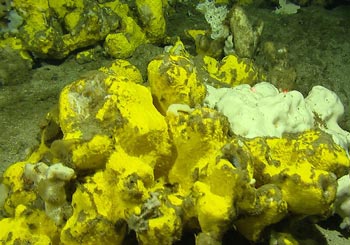
Example of sponge found in the area.
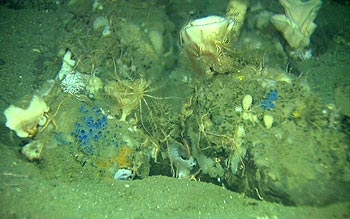
Sponges can take various shapes and colours.
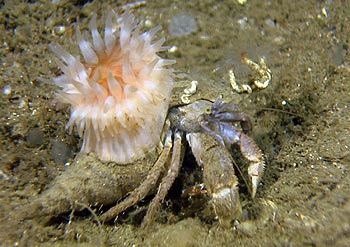
Hermit crab with a sea anemone on its shell.